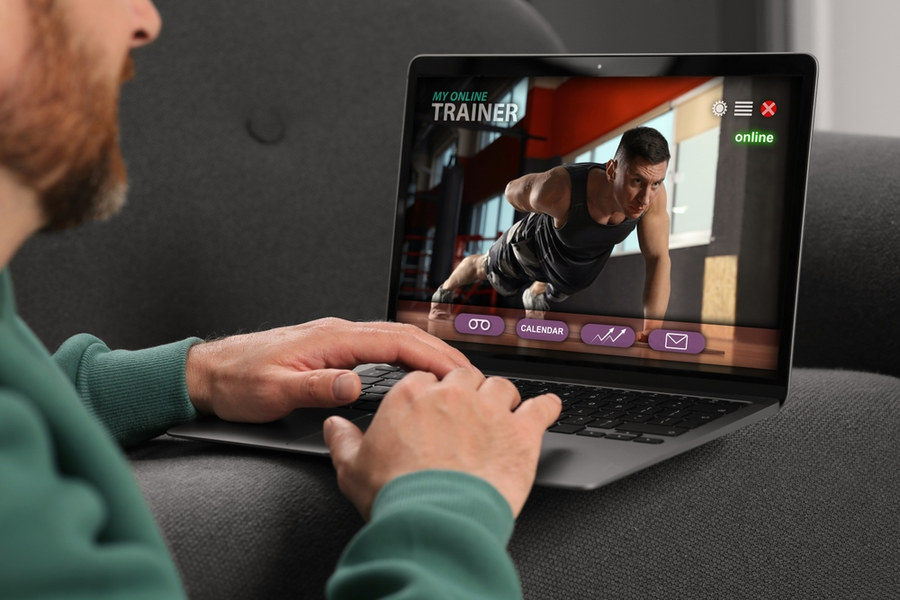
At first, it felt like the perfect solution. Open the app, press play, follow the trainer through 30 minutes of squats, lunges, and burpees, and call it a day. No commute, no planning, no thinking. Just movement. For a while, it even worked—you felt fitter, maybe dropped a bit of weight, and stayed consistent.
But now? You’re still showing up, still sweating, and still checking the “workout complete” box. And yet… nothing’s changing. Your strength hasn’t increased. Your body composition looks the same. You’re not performing better—you’re just going through the motions.
You’re not alone. Follow-along workout apps—especially the ones designed for home training—have exploded in popularity, but they come with built-in limitations. And if you train seriously or want long-term results, you need to know what those are—and what to do about them.
The Illusion of Progress: When Consistency Isn’t Enough
Let’s be clear: consistency is crucial. But repeating the same type of workout without progression won’t get you very far—especially once you’ve moved beyond the beginner phase.
Many app-based programmes rely on pre-recorded routines with little to no structured overload. You might rotate between a few different classes each week, but if the intensity, reps, and movement complexity don’t change over time, your body has no reason to adapt. You’re staying busy—but not getting better.
Real-world example: You follow a HIIT app that cycles between four different “total-body” sessions. They’re hard, they make you sweat, but three months later you’re still doing the same 40 jump squats and 10 push-ups—no added reps, no new progressions, no strength metrics tracked. That’s maintenance, not growth.
One-Size-Fits-All Isn’t Programming

Another common issue is generic design. Follow-along workouts are made to appeal to as many users as possible. That means they’re often built for “average” ability levels, using broad goals like fat loss or general fitness. They’re not written for your body, your goals, or your current performance level.
This lack of personalisation can hold back both beginners and intermediate trainees:
- Too easy? You plateau early and coast.
- Too hard? You burn out, modify too much, or risk injury.
- Too random? You’re training, but not training towards anything.
The result? You work hard but lack direction. You might feel fitter but have no tangible idea of what you’re actually improving—because the workouts weren’t built to guide you anywhere specific.
No Feedback = No Refinement
Even the best app trainers can’t see your form. And no form feedback means no correction, no cues, and no accountability—all of which are critical if you’re serious about training well and staying injury-free.
You might think your push-ups are textbook, but if your elbows are flaring, your back is sagging, or you’re bouncing reps, you’re reinforcing poor movement patterns over and over. In a real gym, a coach would flag it. On an app? You just keep going.
And it’s not just about injury risk. Without feedback, you’re more likely to undertrain without realising it—especially with bodyweight or low-resistance movements. A trainer on screen might be doing 12 reps of squats. But for you, 12 might be far too easy. You need 20, or 30, or tempo control to stimulate change—but there’s no way for the app to know that.
Fatigue Isn’t the Goal—Adaptation Is
A lot of app-based workouts lean heavily into burnout-style training. You’re pushed to keep moving with minimal rest, max reps, and phrases like “torch calories” and “feel the burn.” While this can feel satisfying in the short term, it doesn’t guarantee progress.
Fatigue and results are not the same thing.
You can be absolutely exhausted and still not build strength, power, or muscle. Without structured overload, progressive intensity, or measured rest intervals, all you’re really training is your tolerance for being uncomfortable—not your performance.
This kind of intensity-first approach can also lead to unnecessary joint stress and mental fatigue over time, making it harder to recover and stay consistent long-term.
How to Make Your App Work For You

The good news? You don’t have to ditch your workout app completely—especially if it helps you stay consistent. But you do need to use it strategically.
-
Track Your Own Progress
If your app doesn’t log performance metrics, create your own simple tracking system.
- Write down your reps, weights (if used), and rest times
- Track how many reps you do well, not just how many you survive
- Set mini goals—like increasing push-up reps by 5 every two weeks or adding a pause to each lunge
-
Supplement With Strength Work
If your app is mostly cardio or bodyweight circuits, add some structured strength training 2–3 times a week.
- Use resistance bands or dumbbells if you have them
- Focus on progressive compound movements (e.g. split squats, rows, presses)
- Aim for 3–4 sets per movement with clear rep targets
-
Audit the Programming
Not all apps are bad—but many aren’t built by serious coaches.
Ask:
- Does this programme have a clear structure across weeks or months?
- Are movement patterns balanced (push, pull, squat, hinge, core)?
- Is there progressive overload or just variation?
If it’s random, repetitive, or vague, it’s probably not designed for long-term results.
-
Know When to Move On
If you’ve outgrown your app—or it’s simply not serving your goals—be honest about it.
- Are you still being challenged?
- Are you improving in measurable ways?
- Do you still feel mentally engaged with the programme?
Sometimes the best move is to graduate from generalised apps to a personalised programme—whether that’s through online coaching, a well-designed template, or your own plan.
Making Your Training Count
Workout apps can be a great tool—but they’re not a complete training solution for everyone. If you care about getting stronger, moving better, or seeing real physical change, you need more than just enthusiasm and sweat. You need structure, feedback, and progression.
That doesn’t mean you need a commercial gym or a personal trainer in your pocket—but it does mean taking ownership of your training. Use the app—but don’t be ruled by it. Supplement it. Adjust it. Outgrow it, if you need to.
Your body will only adapt to the challenges you give it. So if your current app isn’t pushing you forward, it’s time to start programming with intention—whether it’s on-screen or not.
